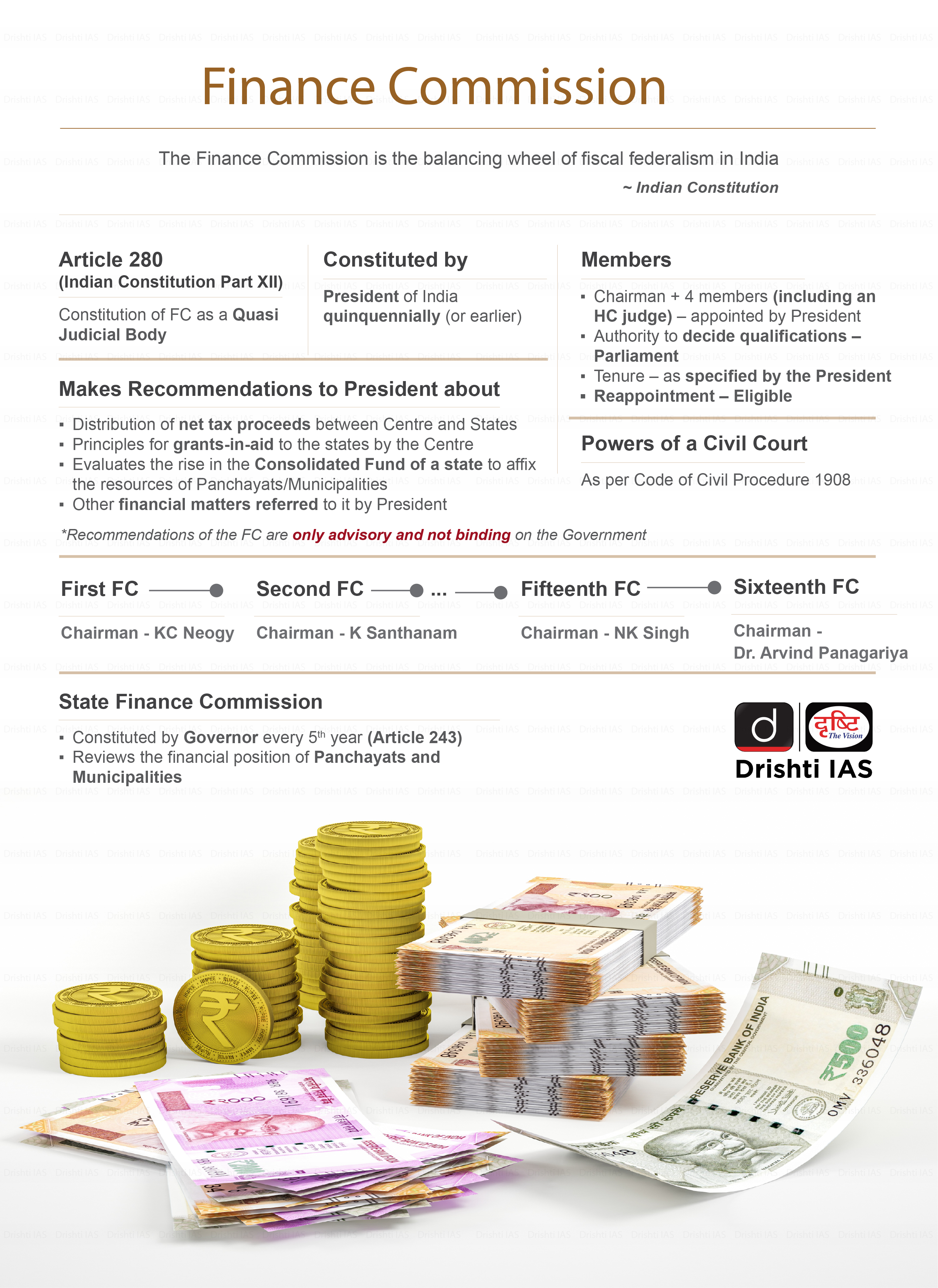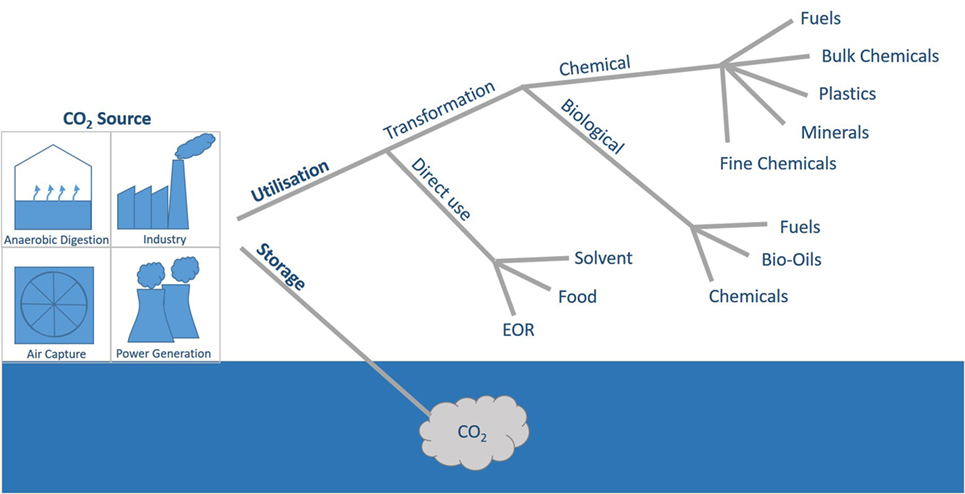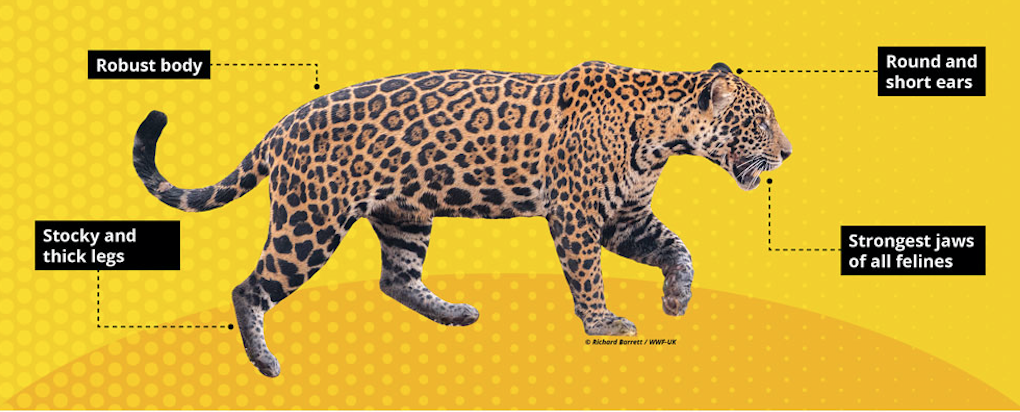Infographics
Governance
India and Refugee Policy
For Prelims: Refugee in India, 1951 Refugee Conference, Foreigners Act of 1946, Citizenship Amendment Act, 2019 (CAA), Rohingya Refugee, United Nations High Commissioner for Refugees
For Mains: Status of Refugees in India, Current Legislative Framework in India to Handle Refugees, Challenges Faced by Refugees in India
Why in News?
Recently, many Kuki-Chin refugees from Chittagong Hill Tract Area in Bangladesh entered Mizoram (India) fearing an attack from Bangladesh security forces against them.
- Mizoram Government expressed sympathy for the refugees, who belong to the Chin-Kuki-Mizo communities, and resolved to give temporary shelter, food and other relief as per convenience of the state government.
What Causes these Refugee Influx?
- The CHT (Chittagong Hill Tracts) is an impoverished hilly, forested area that sprawls over more than 13,000 sq km of the Khagrachari, Rangamati, and Bandarban districts of southeastern Bangladesh, bordering Mizoram to the east, Tripura to the north, and Myanmar to the south and southeast.
- A significant portion of the population is tribal, and culturally and ethnically different from the majority Muslim Bangladeshis who live in the country’s deltaic mainland.
- The tribal population of the CHT has ethnic links with tribal populations in the adjacent areas of India, mainly in Mizoram.
- Mizoram shares a 318-km-long border with Bangladesh
- Mizoram is already playing host to about 30,000 refugees who have been fleeing fighting in Myanmar’s Chin state since around July-August 2021.
How are Refugees Protected in India?
- India ensures that refugees can access protection services that are on a par with their fellow Indian hosts.
- For those refugees registered directly by the Government such as those from Sri Lanka, they are entitled to Aadhaar cards and PAN cards to enable their economic and financial inclusion.
- They can have access to national welfare schemes and contribute effectively to the Indian economy.
- However, for those registered with UNHCR, such as refugees from Afghanistan, Myanmar and other countries, while they have access to protection and limited assistance services, they do not possess government-issued documentation.
- Thus, they are unable to open bank accounts and don’t get benefit from all government welfare schemes, and are thus inadvertently left behind.
What is India’s Refugee Policy?
- India lacks specific legislation to address the problem of refugees, in spite of their increasing inflow.
- India is not a party to the 1951 Refugee Convention and its 1967 Protocol, the key legal documents pertaining to refugee protection.
- However, India has had a stellar record on the issue of refugee protection. India has a moral tradition for assimilating foreign people and culture.
- Moreover, the Foreigners Act, 1946, fails to address the peculiar problems faced by refugees as a class.
- It also gives unbridled power to the Central government to deport any foreign citizen.
- Further, the constitution of India also respects the life, liberty, and dignity of human beings.
- The Supreme Court in the National Human Rights Commission vs. State of Arunachal Pradesh (1996) held that “while all rights are available to citizens, persons including foreign citizens are entitled to the right to equality and the right to life, among others.”
- Further, Article 21 of the Constitution encompasses the right of non-refoulement.
- Non-refoulement is the principle under international law which states that a person fleeing persecution from his own country should not be forced to return to his own country.
What is the Status of Refugees in India?
- Since its independence, India has accepted various groups of refugees from neighbouring countries, including:
- Partition refugees from Pakistan in 1947.
- Tibetan refugees that arrived in 1959.
- Chakma and Hajong from present day Bangladesh in early 1960s.
- Other Bangladeshi refugees in 1965 and 1971.
- Sri Lankan Tamil refugees from the 1980s.
- Most recently Rohingya refugees from Myanmar, 2022.
Why Hasn’t India Framed a Law on Refugees Yet?
- Refugees vs Immigrants: In the recent past, many people from neighboring countries tend to illegally immigrate to India, not because of state persecution but in search of better economic opportunities in India.
- While the reality is that much of the debate in the country is about illegal immigrants, not refugees, the two categories tend to get bunched together.
- Open Scope of Maneuver: Absence of legislation has allowed India to keep its options open on the question of refugees. The government can declare any set of refugees as illegal immigrants.
- This was the case that has happened with Rohingya (they are stateless, Indo-Aryan ethnic group who reside in Rakhine State, Myanmar), despite the UNHCR verification, the government decided to deal with them as trespassers under the Foreigners Act or the Indian Passport Act.
What is the Current Legislative Framework to Handle Refugees?
- Foreigners Act of 1946: Under Section 3, the Central government is empowered to detect, detain and deport illegal foreign nationals.
- Passport (Entry into India) Act, 1920 : Under Section 5, authorities can remove an illegal foreigner by force under Article 258(1) of the Constitution of India.
- Registration of Foreigners Act of 1939: Under this, there is a mandatory requirement under which all foreign nationals (excluding overseas citizens of India) visiting India on a long-term visa (more than 180 days) is required to register themselves with a Registration Officer within 14 days of arriving in India.
- Citizenship Act, 1955: It provided provisions for renunciation, termination, and deprivation of citizenship.
- Further, Citizenship Amendment Act, 2019 (CAA) seeks to provide citizenship only to Hindu, Christian, Jain, Parsi, Sikh, and Buddhist immigrants persecuted in Bangladesh, Pakistan, and Afghanistan.
What is the Difference Between Refugees and Migrants?
- Refugees are people outside their countries of origin who are in need of international protection because of a serious threat to their life, physical integrity or freedom in their country of origin as a result of persecution, armed conflict, violence or serious public disorder.
- Migrants leave their country because they want to work, study or join a family.
- There are well-defined and specific grounds, which have to be satisfied before a person can qualify to be a ‘refugee’
- There is no internationally accepted legal definition of a migrant.
Way Forward
- Model laws on asylum and refugees that were drafted by the National Human Rights Commission (NHRC) decades ago but not implemented by the government could be revised by an expert committee.
- If such laws are enacted, it would give legal sanctity and uniformity, ensuring the protection of human rights.
- If India had domestic legislation regarding refugees, it could have deterred any oppressive government in the neighborhood to persecute their population and make them flee to India.
- Protection of women and child refugees from violence and harassment by authorities or local residents in consonance with Fundamental Duty enshrined in our Constitution.
- Article 51A (e) enjoins upon every citizen to renounce practices derogatory to the dignity of women.
UPSC Civil Services Examination Previous Year Question (PYQ)
Prelims
Q. Consider the following pairs: (2016)
Community sometimes In the affairs of
mentioned in the news
- Kurd — Bangladesh
- Madhesi — Nepal
- Rohingya — Myanmar
Which of the pairs given above is/are correctly matched?
(a) 1 and 2
(b) 2 only
(c) 2 and 3
(d) 3 only
Ans- (c)
Mains
Q. How does illegal transborder migration pose a threat to India’s security? Discuss the strategies to curb this, bringing out the factors which give impetus to such migration. (2014)


Governance
First E-collectorate in Bihar
For Mains: Red Tape and its consequences
Why in News?
Saharsa became the first district in Bihar to be declared paperless (e-office) with an aim to end the Great Indian Red Tape.
What is an e-Office Initiative?
- E-Office is a Mission-Mode project as part of e-Governance Initiatives.
- The e-office initiative goes back to 2009, but the towering piles of paperwork were–and still are–a hurdle too high to cross.
- Idukki in Kerala became paperless in 2012 and Hyderabad in 2016.
- It aims to significantly improve the operational efficiency of Government Ministries and Departments through improvement in the workflow mechanism and office procedure manuals.
What is Red Tape?
- It is a derisive term for excessive regulation or rigid conformity to formal rules that is considered redundant or bureaucratic and hinders or prevents action or decision-making.
- It is usually applied to the government but can also be applied to other organisations like corporations.
- It generally includes the filling out of seemingly unnecessary paperwork, obtaining of unnecessary licenses, having multiple people or committees approve a decision and various low-level rules that make conducting one’s affairs slower and/or more difficult.
What are the Consequences of Red Tapism?
- Increased Cost of Doing Business:
- In addition to time and money spent filling out forms, red tape reduces productivity and innovation in businesses.
- Small businesses are particularly burdened by this and may discourage people from starting up a new business.
- Poor Governance:
- Because of red tape, contracts are not enforced consistently, and administration is delayed, resulting in delayed justice, especially for the poor. The burden of red tape requirements prevents many to enjoy their rights due to delayed governance and delayed distribution of welfare measures.
- Citizen Dissatisfaction:
- The delays caused by government processing and the costs associated with them remain a source of dissatisfaction among citizens. Red Tapism leads to a sense of loss of trust in the government's process most of the time, leaving citizens with unresolved problems.
- Delay in Scheme Implementation:
- Each new government scheme is met with red tape that eventually kills the larger objective for which it was launched.
- Lack of proper monitoring, delayed release of funds, etc., are common associated issues connected to Red Tapism.
- Corruption:
- According to a World Bank study, corruption increases with increasing red tape.
- By complicating the normal flow of businesses, bureaucracy breeds corruption and lowers growth.
What is the Need to End Red Tape?
- Bring Efficiency:
- Digitisation can help in bringing efficiency, transparency and accountability.
- Increased Employee Productivity:
- It has increased employee productivity and reduced the number of workers required to process one file since files are processed within a day.
- In the government system, it is said that the faster a file moves, the faster a policy will be implemented.
- Bring Accountability:
- The online system has also brought in more accountability and staff members cannot sit on files for days on end.
- A Step towards Good Governance:
- Technology is the first step towards good governance and a corruption-free system.
- The more technology we implement, the easier our service delivery will be to the public.
Way Forward
- With a bottom-up approach of planning through separate urban-rural level socio-economic databases, there is a need for a holistic and Integrated approach from government ministries that includes identifying, evaluating, formulating, implementing and redressing data driven policies to meet the needs of the population at the earliest.
- E-Governance needs to transform all levels of Government, but the focus should be on local governments since local governments are the closest to citizens, and constitute for many, the main interface with government.
- Special attention should be given to improve digital infrastructure especially in rural areas along with better internet connectivity.
- E-Governance through regional languages is appreciable for nations like India where people from several linguistic backgrounds are the participants.

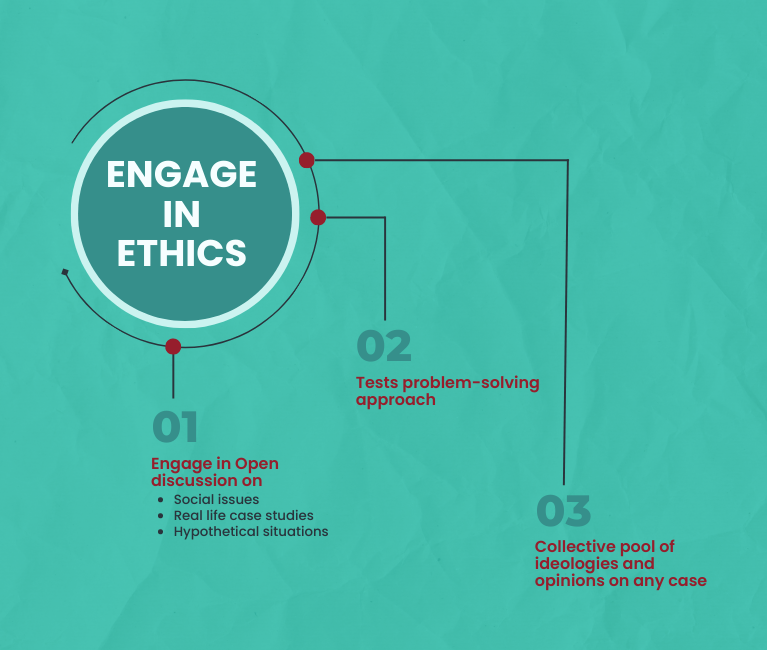
Governance
State of India’s Health Sector
For Prelims: Fifteenth Finance Commission, Concurrent list, National Health Mission Ayushman Bharat, Pradhan Mantri Jan Arogya Yojana (AB-PMJAY), National Medical Commission
For Mains: Healthcare Sector in India and related issues
Why in News?
Recently, Fifteenth Finance Commission chairperson N.K. Singh addressed the Confederation of Indian Industry (CII)’s 19th Health Summit 2022 and highlighted various issues in the sector.
- The CII works to create and sustain an environment conducive to the development of India, partnering industry, Government, and civil society, through advisory and consultative processes.
What are the Recommendations/Issues Highlighted?
- Inclusion of Health in the Concurrent List:
- Under the Constitution, the term 'health' should be included in the Concurrent List.
- Also made a pitch for universalising health insurance to capture ‘the missing middle’.
- The Missing Middle: People who are not rich enough to buy private health cover nor poor enough to qualify for government schemes.
- Increasing Public Outlays:
- There is a need to enhance public outlays [on health] to 2.5% of GDP by 2025.
- This would entail a major jump over this year’s Budget numbers and require States to target 8% of their Budgets towards the health sector, which is ‘a daunting challenge’.
- There is a need to enhance public outlays [on health] to 2.5% of GDP by 2025.
- Inter-State Variations on Health Spending:
- The need is to recognise the large inter-State variations on health spending and outcomes.
- For instance, except Meghalaya, states are spending less than 8% of their Budget on the health sector, with the average being at 5.18% in 2018–19.
- The per capita health spending of Bihar, Uttar Pradesh and Jharkhand is about half that of Kerala and Tamil Nadu.
- The need is to recognise the large inter-State variations on health spending and outcomes.
- Development Financial Institution:
- The Finance Commission chief also suggested setting up a development financial institution for the health sector.
- Development Financial Institutions are specialized institutions set up primarily to provide development/ Project finance especially in developing countries. These are usually majority-owned by national governments.
- The Finance Commission chief also suggested setting up a development financial institution for the health sector.
- Restructuring CSS:
- Additionally, it was suggested that Centrally Sponsored Schemes (CSS) should be restructured to make them more flexible for states to adapt and innovate.
What is the Scenario of the Healthcare Sector in India?
- About:
- The healthcare industry comprises hospitals, medical devices, clinical trials, outsourcing, telemedicine, medical tourism, health insurance and medical equipment.
- India’s healthcare delivery system is categorised into two major components - public and private.
- The government (public healthcare system) comprises limited secondary and tertiary care institutions in key cities and focuses on providing basic healthcare facilities in the form of Primary Healthcare Centres (PHCs) in rural areas.
- The private sector provides a majority of secondary, tertiary, and quaternary care institutions with major concentration in metros, tier-I and tier-II cities.
- Potential of the Indian Health Sector:
- India's competitive advantage lies in its large pool of well-trained medical professionals. India is also cost competitive compared to its peers in Asia and western countries. The cost of surgery in India is about one-tenth of that in the US or Western Europe.
- India has all the essential ingredients for the exponential growth in this sector, including a large population, a robust pharma and medical supply chain, 750 million plus smartphone users, 3rd largest start-up pool globally with easy access to VC (Venture Capital Fund) funding and innovative tech entrepreneurs looking to solve global healthcare problems.
- India will have about 50 clusters for faster clinical testing of medical devices to boost product development and innovation.
- The sector will be driven by life expectancy, shift in disease burden, changes in preferences, growing middle class, increase in health insurance, medical support, infrastructure development and policy support and incentives.
- As of 2021, the Indian healthcare sector is one of India’s largest employers as it employs a total of 4.7 million people. The sector has generated 2.7 million additional jobs in India between 2017-22 - over 500,000 new jobs per year.
What are the Related Initiatives?
Way Forward
- There is an urgent need to improve the infrastructure of public hospitals, which are overburdened as a result of India's large population.
- The government should encourage private hospitals because they make a significant contribution.
- Because the difficulties are severe and cannot be tackled just by the government, the private sector must also engage.


Biodiversity & Environment
CCUS Policy Framework and its Deployment
For Prelims: CCUS Technologies, Paris Agreement.
For Mains: CCUS Technologies, Applications, Net Zero emissions by 2050, Environment Degradation, Conservation.
Why in News?
Recently, NITI Aayog has released a study report, titled ‘Carbon Capture, Utilisation, and Storage (CCUS) Policy Framework and its Deployment Mechanism in India’.
- The report explores the importance of Carbon Capture, Utilisation, and Storage as an emission reduction strategy to achieve deep decarbonization from the hard-to-abate sectors.
What are the Key Highlights of the Report?
- About:
- CCUS can provide a wide variety of opportunities to convert the captured CO2 to different value-added products like green urea, food and beverage form application, building materials, chemicals (methanol and ethanol), polymers (including bio-plastics) and enhanced oil recovery (EOR) with wide market opportunities in India, thus contributing substantially to a circular economy.
- CCUS projects will also lead to a significant employment generation. It estimates that about 750 mtpa of carbon capture by 2050 can create employment opportunities of about 8-10 million on full time equivalent (FTE) basis in a phased manner.
- Suggestions:
- Broad level policy interventions needed across various sectors for its application.
- As, India has updated its NDC targets for achieving 50% of its total installed capacity from non-fossil-based energy sources, 45% reduction in emission intensity by 2030 and taking steps towards achieving Net Zero by 2070, the role of CCUS becomes important as reduction strategy to achieve decarbonization from the hard-to abate sectors.
- India’s dependency on fossil-based Energy Resources is likely to continue in future, hence CCUS policy in Indian Context is needed.
What is Carbon Capture, Utilization, and Storage?
- CCUS encompasses methods and technologies to remove CO2 from the flue gas and from the atmosphere, followed by recycling the CO2 for utilization and determining safe and permanent storage options.
- CO2 captured using CCUS technologies is converted into fuel (methane and methanol), refrigerants and building materials.
- CCUS is considered an important tool to help countries halve their emissions by 2030 and reach net-zero by 2050.
- These goals are crucial to meet the Paris Agreement targets for restricting global warming to 2 degrees Celsius (°C), and preferable to 1.5°C, over pre-industrial levels.
What are Applications of CCUS?
- Mitigating Climate Change: Despite the adoption of alternative energy sources and energy efficient systems to reduce the rate of CO2 emissions, the cumulative amount of CO2 in the atmosphere needs to be reduced to limit the detrimental impacts of climate change.
- Agriculture: Capturing CO2 from biogenic sources such as plants and soil to boost crop growth in a greenhouse could work.
- Industrial Use: Combining CO2 with steel slag - an industrial byproduct of the steel manufacturing process — to make construction materials compatible with the Paris Agreement goals.
- Enhanced Oil Recovery: CCU is already making inroads into India. For instance, Oil and Natural Gas Corporation signed a MoU with Indian Oil Corporation Limited (IOCL) for Enhanced Oil Recovery (EOR) by injecting CO2.
What are the Challenges associated with CCUS?
- Expensive: Carbon capture involves the development of sorbents that can effectively bind to the CO2 present in flue gas or the atmosphere, which is expensive.
- Lesser Demand for Recycled CO2: Converting CO2 into useful chemicals of commercial importance, or utilizing CO2 for oil extraction or remediation of alkaline industrial wastes, would add economic value to this greenhouse gas.
- However, the demand for CO2 is limited compared to the vast amount of CO
2that needs to be removed from the atmosphere, to reduce the detrimental environmental impacts of climate change.
- However, the demand for CO2 is limited compared to the vast amount of CO
Way Forward
- Any viable system for storing carbon must be effective and cost competitive, stable as long-term storage, and environmentally benign.
- Countries should narrow down on the handful of technologies that show more promise and channel investment in them.
- Replacing a conventional fuel with a synthetic fuel like methanol produced via CCU is likely to be a successful mitigation strategy only if clean energy is used to capture CO2 and convert it into synthetic fuel.


Biodiversity & Environment
Mobilising Green Funds
For Prelims: Climate Finance, COP 27, United Nations Framework Convention on Climate Change (UNFCCC)
For Mains: Climate Finance and its Significance
Why in News?
Recently, at the United Nations Framework Convention on Climate Change Conference (UNFCCC) of Parties 27 in Sharm el-Sheikh (Egypt), countries agreed that a complete transformation of the international financial system was needed to significantly scale up resources for Climate Action.
- The money currently being channelised for climate action is barely 1%-10% of the estimated requirements.
What is Climate Finance?
- It refers to local, national, or transnational financing—drawn from public, private and alternative sources of financing—that seeks to support mitigation and adaptation actions that will address climate change.
- The UNFCCC, Kyoto Protocol, and the Paris Agreement call for financial assistance from Parties with more financial resources (Developed Countries) to those that are less endowed and more vulnerable (Developing Countries).
- This is in accordance with the principle of “Common but Differentiated Responsibility and Respective Capabilities” (CBDR).
- CBDR is a principle within the UNFCCC that acknowledges different capabilities and differing responsibilities of individual countries in addressing climate change. The principle of CBDR is enshrined in Earth Summit 1992, held in Rio de Janeiro, Brazil.
How much Fund is Needed for Climate Action?
- The global transition to a low-carbon economy would likely require about USD 4-6 trillion every year till 2050.
- About USD 4 trillion would need to be invested annually in the renewable energy sector till 2030 if the net-zero emissions targets were to be achieved.
- The cumulative requirement of the developing countries, just for implementing their climate action plans, was about USD 6 trillion between 2022-2030.
- It means that at least 5% of the global Gross Domestic Product (GDP) would need to be directed into climate action every year.
- Just a few years ago, the estimated requirements ranged between 1 and 1.5% of global GDP.
- The USD 100 billion amount that the developed countries have promised to mobilise every year represents practically the entire money in play right now.
- Even this USD 100 billion has not yet been fully realised.
- Developed countries say they would reach this target by 2023. As of now, all that is flowing in is about USD 50-80 billion every year.
What are the Challenges in Mobilization of Climate Fund?
- Even if developed countries increase their contributions, it will likely result in only a marginal increase in the overall pie.
- The more significant jump would come from businesses and corporations investing money into green projects.
- In climate finance till now, private investments have lagged behind public money.
- Barely 30% of current financial flows are coming from private sources.
- The current rules and regulations of the global financial system make it extremely difficult for large numbers of countries to access international finance, particularly those with political instabilities, or weaker institutional and governance structures.
- Climate finance flows through a maze of channels — bilateral, regional, multilateral.
- It is in the form of grants, concessionary loans, debt, equity, carbon credits, and more.
- There are differences of opinion over whether a particular sum of money is actually climate-related. There are widely differing assessments of the quantum of climate finance currently being mobilised.
What can Tax be a source to the Climate Fund?
- Bulk of the additional financial resources to fight climate change would come from the pockets of the common citizen, in the form of taxes.
- The use of petrol and diesel, and other fossil fuels can be taxed.
- The production of coal is already being taxed for several years in India, and it has been generating valuable resources for the government, which has utilized it mainly for investing in clean technologies.
- These funds have also been utilised for works in the Clean Ganga Mission and during the Covid-19 pandemic.
- Newer forms of Carbon Tax are likely to be imposed on businesses as well.
- In many cases, these would filter down to the common person of the country.
What are India’s Initiatives for Climate Finance?
- National Adaptation Fund for Climate Change (NAFCC):
- NAFCC was established in 2015 to meet the cost of adaptation to climate change for the State and Union Territories of India that are particularly vulnerable to the adverse effects of climate change.
- National Clean Energy Fund:
- The Fund was created to promote clean energy, and funded through an initial carbon tax on the use of coal by industries.
- It is governed by an Inter-Ministerial Group with the Finance Secretary as the Chairman.
- Its mandate is to fund research and development of innovative clean energy technology in the fossil and non-fossil fuel-based sectors.
- National Adaptation Fund:
- The fund was established in 2014 with a corpus of Rs. 100 crores with the aim of bridging the gap between the need and the available funds.
- The fund is operated under the Ministry of Environment, Forests, and Climate Change (MoEF&CC).
Way Forward
- There is a need to sustain a political commitment to raising new finance, besides,
- Ensuring that finance is better targeted at reducing emissions and vulnerability.
- Learning and improving from recent experiences, particularly as the Green Climate Fund gets to work.
- International Financial Institutions can engage with governments, central banks, commercial banks and other financial players operating at national or regional levels to create the right environment for investments in green projects.
- Incentivising climate-friendly investments and discouraging, or even penalising, dirty investments should also be practiced.
- The funding transformation also involve simplification of practices, changes in the way risks to investments are assessed, and an overhaul of the credit rating systems.
UPSC Civil Services Examination, Previous Year Questions (PYQs)
Prelims
Q. Which of the following statements is/are correct about the deposits of ‘methane hydrate’? (2019)
- Global warming might trigger the release of methane gas from these deposits.
- Large deposits of ‘methane hydrate’ are found in Arctic Tundra and under the sea floor.
- Methane in atmosphere oxidizes to carbon dioxide after a decade or two.
Select the correct answer using the code given below.
(a) 1 and 2 only
(b) 2 and 3 only
(c) 1 and 3 only
(d) 1, 2 and 3
Ans: (d)
Exp:
- Methane hydrate is a crystalline solid that consists of a methane molecule surrounded by a cage of interlocking water molecules. It is an “ice” that only occurs naturally in subsurface deposits where temperature and pressure conditions are favourable for its formation.
- Regions with suitable temperature and pressure conditions for the formation and stability of methane hydrate– sediment and sedimentary rock units below the Arctic permafrost; sedimentary deposits along ontinental margins; deep-water sediments of inland lakes and seas; and, under Antarctic ice. Hence, statement 2 is correct.
- Methane hydrates, the sensitive sediments, can rapidly dissociate with an increase in temperature or a decrease in pressure. The dissociation produces free methane and water, which can be triggered by global warming. Hence, statement 1 is correct.
- Methane is removed from the atmosphere in about 9 to 12 year period by oxidation reaction where it is converted into Carbon Dioxide. Hence, statement 3 is correct. Therefore, option (d) is the correct answer.
Mains
Q. Explain the purpose of the Green Grid Initiative launched at World Leaders Summit of the COP26 UN Climate Change Conference in Glasgow in November, 2021. When was this idea first floated in the International Solar Alliance (ISA)? (2021)
Q. Describe the major outcomes of the 26th session of the Conference of the Parties (COP) to the United Nations Framework Convention on Climate Change (UNFCCC). What are the commitments made by India in this conference? (2021)


Important Facts For Prelims
International Jaguar Day
Why in News?
Recently, the National Zoological Park, New Delhi (Delhi Zoo) celebrated the International Jaguar Day.
What is International Jaguar Day?
- International Jaguar Day was created to raise awareness about the increasing threats facing the jaguar and the critical conservation efforts ensuring its survival from Mexico to Argentina.
- Observed annually on November 29, International Jaguar Day celebrates the Americas’ largest wild cat as an umbrella species for biodiversity conservation and an icon for sustainable development and the centuries-old cultural heritage of Central and South America.
- International Jaguar Day also represents the collective voice of jaguar range countries, in collaboration with national and international partners, to draw attention to the need to conserve jaguar corridors and their habitats as part of broader efforts to achieve the United Nation’s Sustainable Development Goals (SDGs).
What are the Key Facts about Jaguar?
- Jaguar is the largest carnivore and only big cat in Latin America, encompassing 18 countries from Mexico to Argentina.
- Its scientific name is Panthera Onca.
- As a “Near Threatened” species on the International Union for Conservation of Nature (IUCN) Red List of Threatened Species, the jaguar is extinct in El Salvador and Uruguay, and facing pressure in remaining range countries.
- Convention on International Trade in Endangered Species of Wild Fauna and Flora (CITES) Listings: Appendix I
- Jaguars have experienced over 50% loss in its natural habitat range.
- Jaguars are often mistaken for leopards, but can be differentiated due to the spots within the rosettes on their coats.
- While many cats avoid water, jaguars are great swimmers, and have even been known to swim the Panama Canal.
- The jaguar has been identified as one species across its entire range, making the connection and protection of its habitat critical for the species’ genetic diversity.


Important Facts For Prelims
Fujiwhara Effect
Why in News?
With typhoon Hinnamnor and another tropical storm called Gardo, meteorologists observed a phenomenon called the Fujiwhara Effect.
- Typhoon Hinnamnor, known in the Philippines as Super Typhoon Henry, was a very large and powerful tropical cyclone in Pacific Ocean that impacted Japan and South Korea.
What is the Fujiwhara Effect?
- About:
- The Fujiwhara Effect is any interaction between tropical storms formed around the same time in the same ocean region with their centres or eyes at a distance of less than 1,400 km, with intensity that could vary between a depression (wind speed under 63 km per hour) and a super typhoon (wind speed over 209 km per hour).
- The interaction could lead to changes in the track and intensity of either or both storm systems.
- In rare cases, the two systems could merge, especially when they are of similar size and intensity, to form a bigger storm.
- Different ways in which Fujiwhara Effect can take place:
- Elastic Interaction:
- In this interaction, only the direction of motion of the storms changes and is the most common case. These are also the cases that are difficult to assess and need closer examination.
- Partial straining out:
- In this interaction, a part of the smaller storm is lost to the atmosphere.
- Complete Straining Out:
- In this interaction, the smaller storm is completely lost to the atmosphere and the straining out does not happen for storms of equal strength.
- Partial Merger:
- In this interaction, the smaller storm merges into the bigger one.
- Complete Merger:
- In this interaction, complete merger takes place between two storms of similar strength.
- Elastic Interaction:
UPSC Civil Services Examination Previous Year Question (PYQ)
Q. Consider the following statements: (2020)
- Jet streams occur in the Northern Hemisphere only.
- Only some cyclones develop an eye.
- The temperature inside the eye of a cyclone is nearly 10ºC lesser than that of the surroundings.
Which of the statements given above is/are correct?
(a) 1 only
(b) 2 and 3 only
(c) 2 only
(d) 1 and 3 only
Ans: (c)
Exp:
- Jet Stream is a geostrophic wind blowing horizontally through the upper layers of the troposphere, generally from west to east, at an altitude of 20,000 - 50,000 feet. Jet Streams develop where air masses of different temperatures meet. So, usually surface temperatures determine where the Jet Stream will form. Greater the difference in temperature, faster is the wind velocity inside the jet stream. Jet Streams extend from 20° latitude to the poles in both hemispheres. Hence, statement 1 is not correct.
- Cyclones are of two types, tropical cyclone and temperate cyclone. The center of a tropical cyclone is known as the ‘eye’, where the wind is calm at the center with no rainfall. However, in a temperate cyclone, there is not a single place where winds and rains are inactive, so the eye is not found. Hence, statement 2 is correct.
- The warmest temperatures are found in the eye itself, not in the eyewall clouds where the latent heat occurs. The air is saturated only where convective vertical motions pass through flight level. Inside the eye, the temperature is greater than 28°C and the dewpoint is less than 0°C. These warm and dry conditions are typical of the eyes of extremely intense tropical cyclones. Hence, statement 3 is not correct.
- Therefore, option (c) is the correct answer.

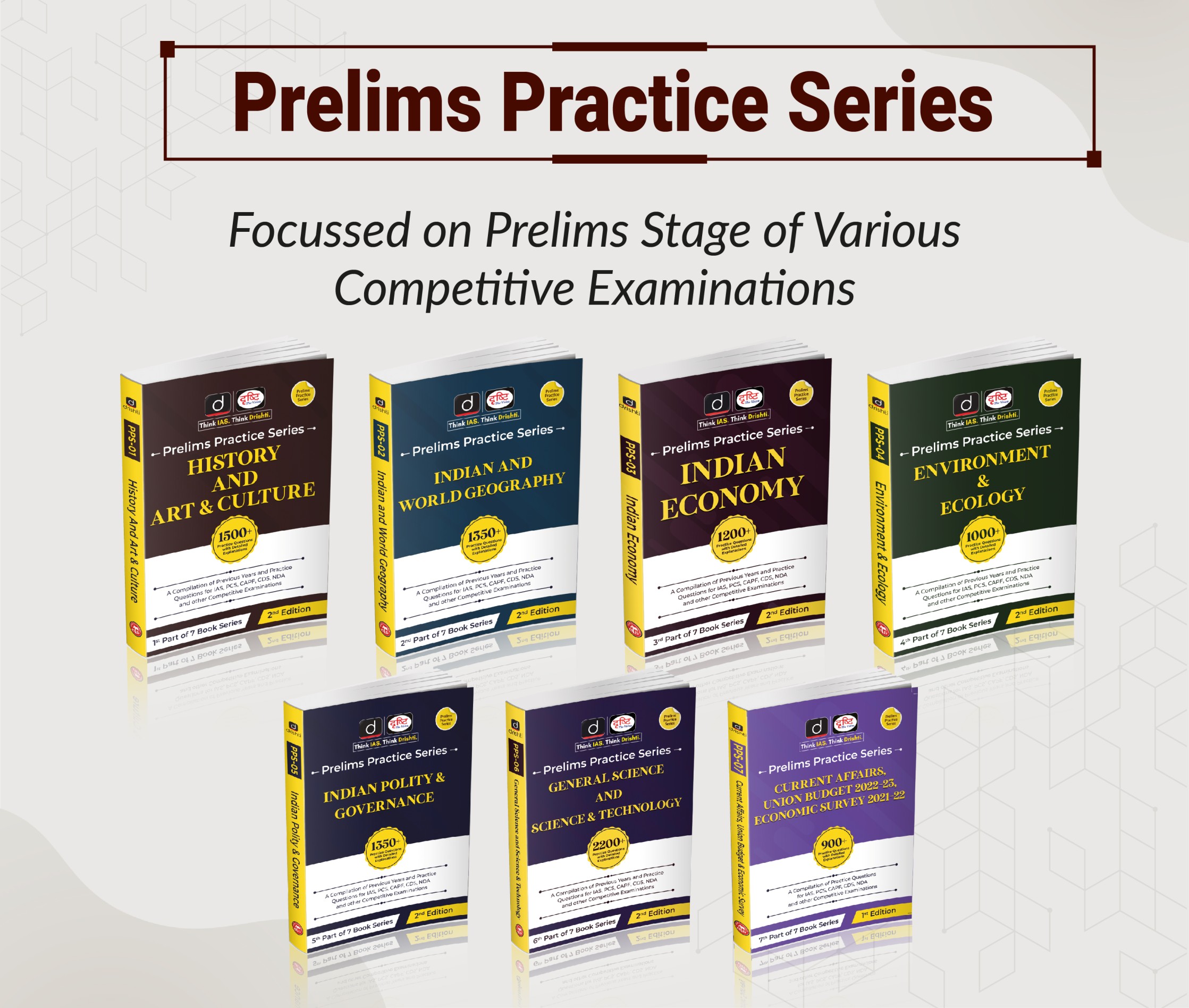
Important Facts For Prelims
SHAKTI Policy
Why in News?
- Recently, the Ministry of Power has announced a Scheme for Procurement of Aggregate Power of 4500 MW on competitive basis for five years on Finance, Own and Operate (FOO) basis under B (v) of SHAKTI Policy.
What are the Key Features of the Scheme?
- Under the scheme, PFC Consulting Ltd has invited bids for the supply of 4,500 MW.
- PFC Consulting Limited (A wholly owned subsidiary of PFC Ltd) has been designated as the Nodal Agency by the Ministry of Power.
- The Ministry of Coal has been requested to allocate around 27 MTPA (Million Tonnes per Annum) for this.
- This scheme is expected to help the states that are facing power shortage and also help generation plants to increase their capacities.
What is SHAKTI Policy?
- About:
- Ministry of Power (MoP) in 2017 cleared the Coal Linkage Policy known as SHAKTI (Scheme to Harness and Allocate Koyla Transparently in India).
- The Policy provides coal linkages to power plants which lack fuel supply agreements (FSAs) through coal auctions.
- Objectives:
- The aim of the Shakti scheme is to ensure the availability of coal to all the Thermal Power Plants in India, in a way that is transparent and objective.
- The scheme is supposed to be beneficial not just for the infrastructure sector, but also for the public sector banks which have huge loans unpaid at the end of the power companies.
- The scheme also aims to reduce the dependence on imported coal and promote domestic industries.


Important Facts For Prelims
Semi-Automated Offside Technology
Why in News?
Federation Internationale de Football Association (FIFA) is using Semi-Automated Offside Technology (SAOT) for offside decisions in the ongoing football world cup.
- The point of the offside rule is to prevent attacking players from perpetually camping in front of the opponent’s goal.
What is Semi-Automated Offside Technology?
- SAOT is a support tool for the video match officials and the on-field officials to help them make faster, more reproducible and more accurate offside decisions.
- There are two parts to the technology — a sensor inside the match ball that is held using suspension technology, and existing tracking tools that are part of the Video Assistant Referee (VAR) system.
- Every time the ball is hit, data is sent in real time (at a whopping 500 frames per second) to a network of antennae installed around the playing field.
- Additionally, there are 12 Hawk-Eye cameras set up around the turf that shadow both the ball and the players, with as many as 29 separate points in the human body tracked.
- The coming together of the ball sensor and the Hawk-Eye cameras is in effect SAOT.
- These two data sets are run through artificial intelligence software which generates automated alerts about offsides to the match officials. This replaces the manual effort taken in poring over replays for minutes on end.



